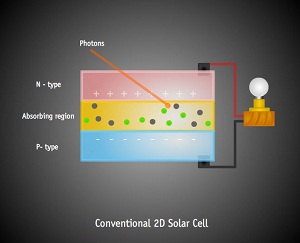Solar3D files patent for 200% solar panel modification
 Solar3D, a company known for innovation based on light management techniques from the fiber optic technology, has released news that a patent has been filed on a design modification that will increase the power output of a cell by 200 percent.
Solar3D, a company known for innovation based on light management techniques from the fiber optic technology, has released news that a patent has been filed on a design modification that will increase the power output of a cell by 200 percent.
While the company already uses a highly efficient, three-dimensional design for the solar cells that they create, the boost in efficiency comes from an innovation that allows the cell to capture light from angles that would defy a standard model.
"Conventional solar cells become dramatically less efficient if the sun is not shining within a narrow range of incident angles," said the President and CEO of Solar3D, Jim Nelson. “Sunlight that hits the cell outside of this range will be reflected off, and the reduced solar energy causes the cell's internal efficiency to drop. Because of a unique wide-angle design, our solar cell can maintain its high efficiency over a wider range of incident angles. It can capture more light in the morning and evening hours, as well as in the winter months when the sun is not directly overhead.”
After a Solar3D cell gathers this extra light, the captured light is then channeled into 3-dimensional photovoltaic micro-structures located underneath the surface of the cell, which is where photons are converted into electrons.
The light collectors and the photovoltaic structures are only two of the features that make Solar3D cells more efficient.
The company also makes use of thin absorbing regions and below surface contacts to maximize the conversion rate of their solar cells.
This new technology will make solar cells more affordable and more efficient.
"Even though our cells' internal conversion efficiency is already 50 percent more than that of conventional solar cells, we believe we are even more efficient if we compare the total power output per day. By that measure, our cell can produce as much as twice as much power than conventional solar cells," said Nelson. "This new design element serves to lower the total cost of ownership of a solar power system by allowing it to capture more sunlight and produce more electricity.”



